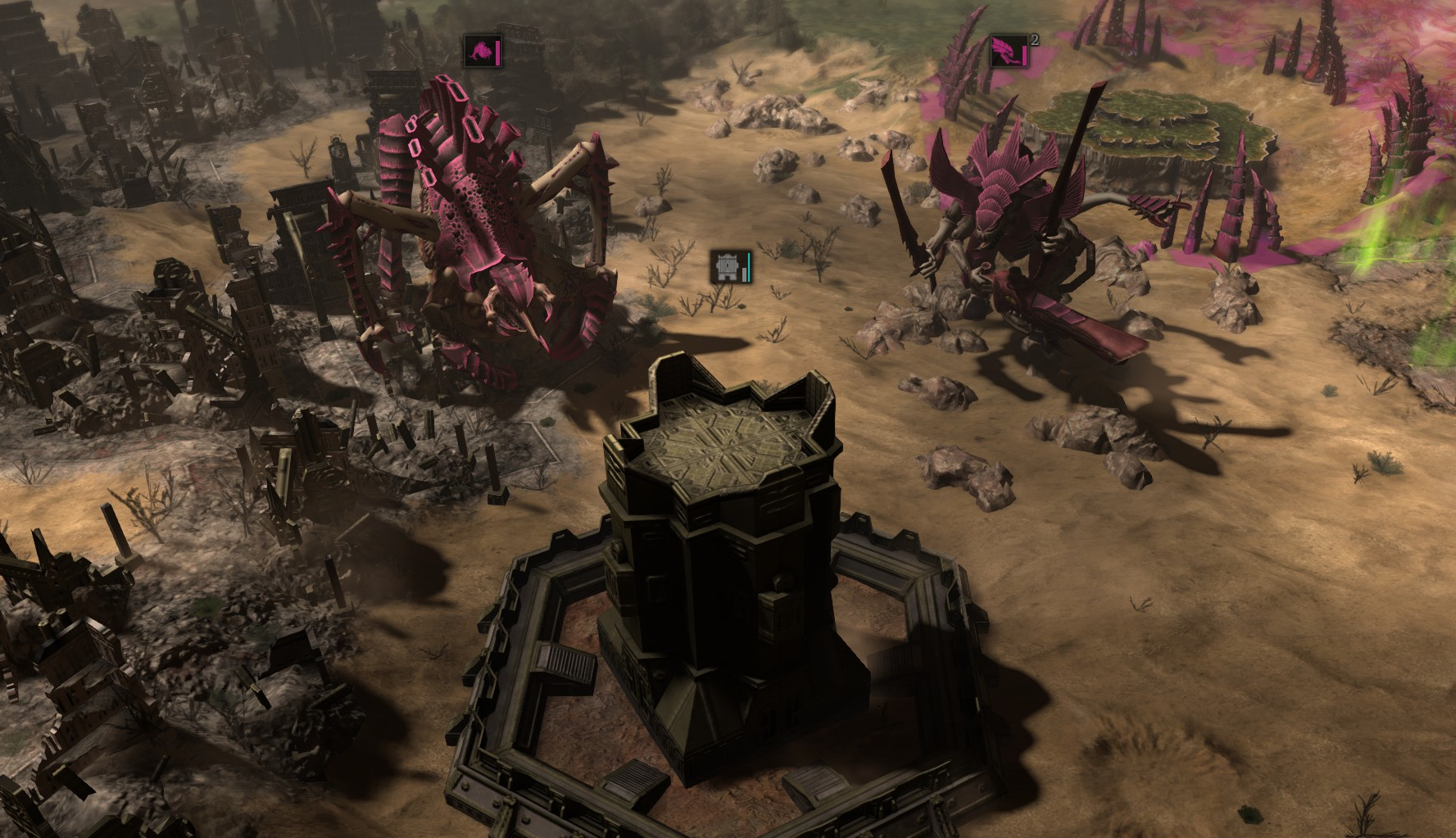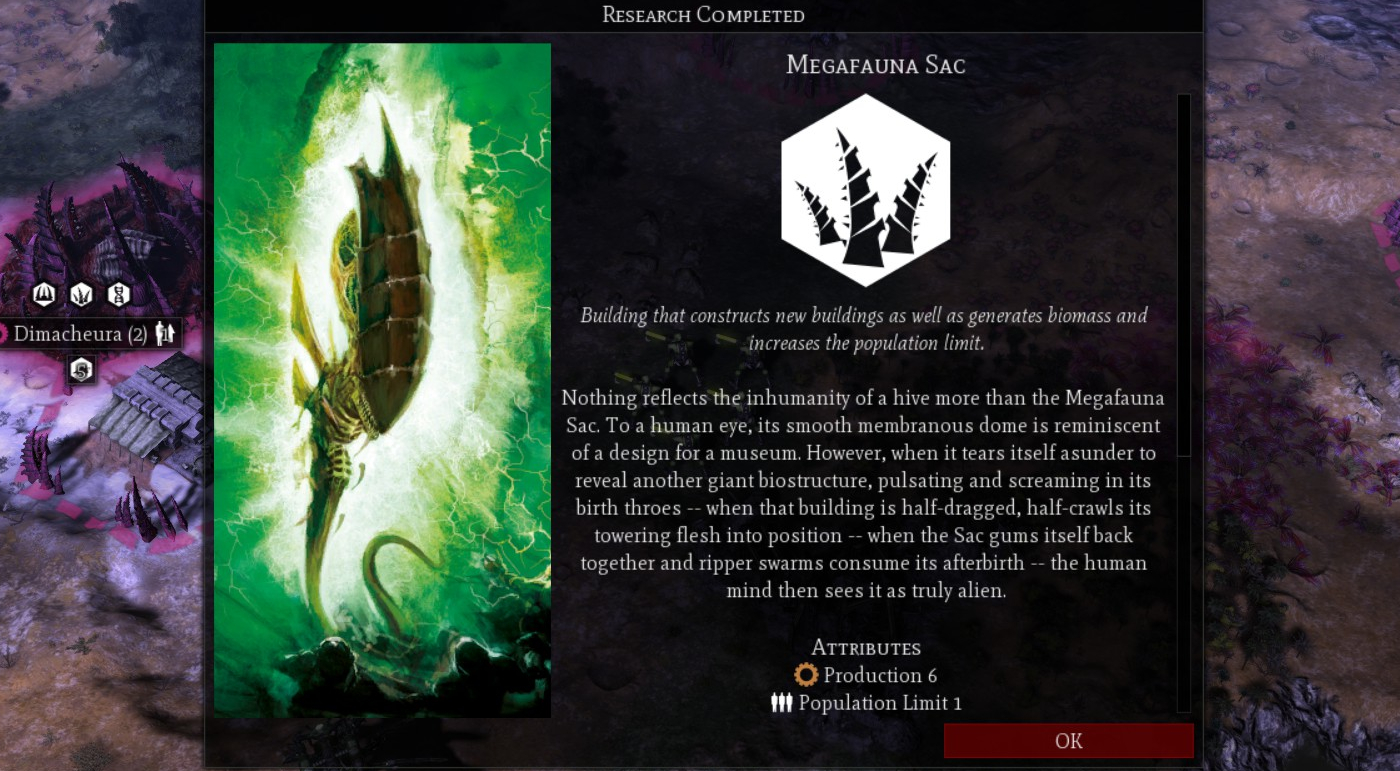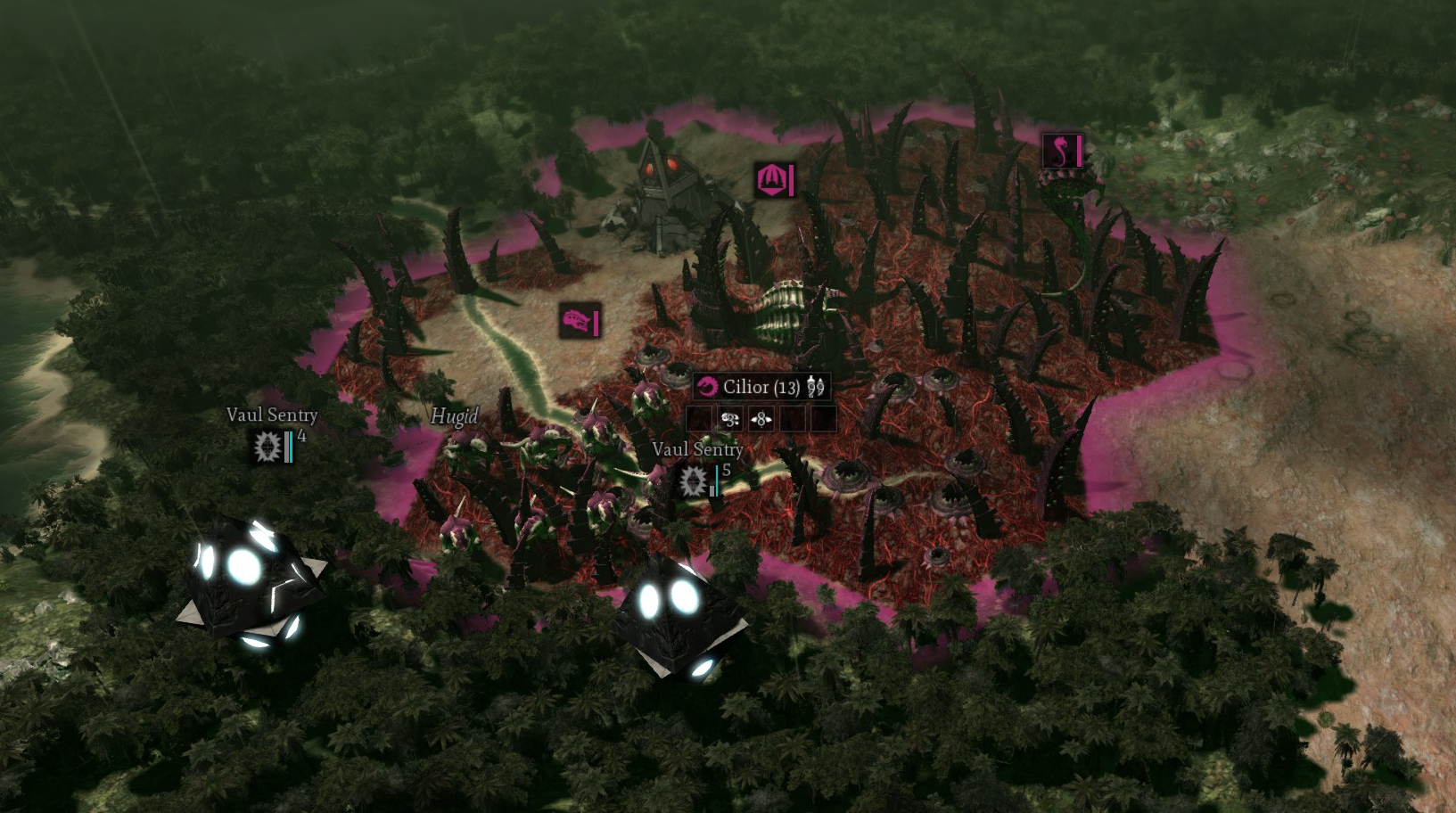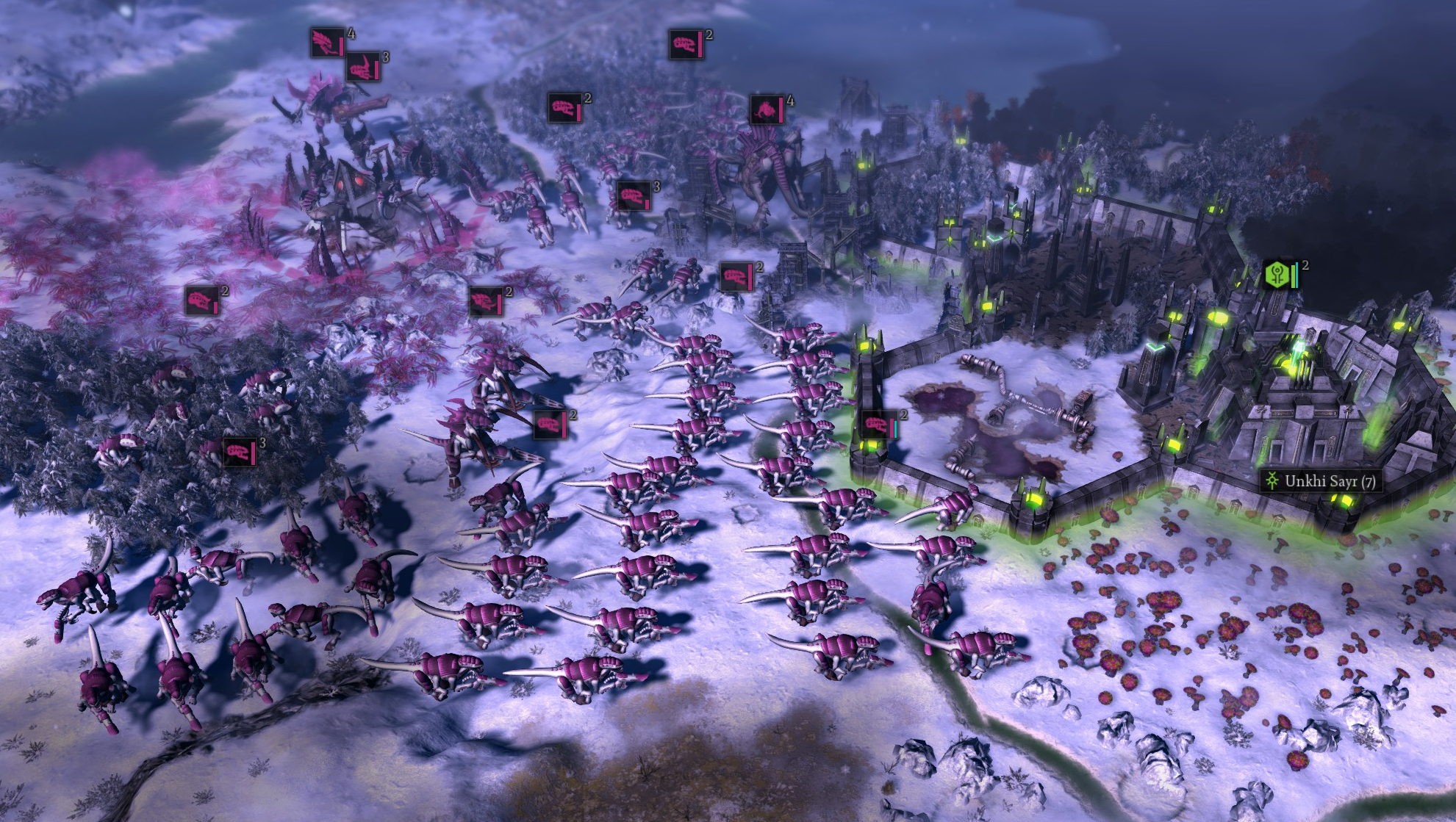Warhammer 40,000: Gladius' Tyranids DLC adds a gruesome but fitting faction
The tyranids have come for dinner.

Unconventional 4X Warhammer 40,000: Gladius welcomed the ravenous tyranids to the war over the titular planet this week. Boy are they hungry. They eat and kill, and that’s about it. But maybe they’re misunderstood! I dove into the DLC to find out if the tyranids really deserve their bad reputation.
Yes, they absolutely do, it turns out. Tyranids are bad news. They exist to consume and destroy and spread their species. I’ve been giving the Aliens comics another read this week, so this is all very familiar stuff, but it doesn’t make the tyranids any less nightmarish.
I mean, just give this description of a tyranid building a read.

Gladius probably doesn’t get enough credit for its flavour. There's great grimdark writing nestled away in the lore and mission text, and the tyranid stuff is especially good. And by good I mean nauseatingly gruesome. Beyond the writing and some of the unit abilities, it can be a bit conservative, however. Tom called it bland in his Warhammer 40,000: Gladius review, and while I have a more favourable opinion, it's often too straightforward. But it also makes some big changes to the 4X formula.
Gladius’ hook is that it’s as much a hexy tactics game as it is a 4X. It’s all-out war, no diplomacy, and you’ll spend most of your time moving armies across the map while fighting hostile fauna and other factions. It’s very aggressive and most of the systems are subservient to kicking the crap out of everyone else on the planet.
Welcome to the buffet
This fits the tyranids perfectly. Like all the factions, though, the tyranids have their own way of doing things. Biomass is what they’re all about. Infesting a world and gobbling up all of its biomass is their whole deal, and that’s the key to their economy in Gladius. Loyalty, research and so on still play a role, but biomass is what allows the tyranids to build their horrible alien armies.

While tyranids can erect buildings that generate biomass, it’s only in tiny amounts, so the better option is to just go straight to the source. Biomass can be stripped away from a tile leaving it a useless chunk of wasteland, so as the tyranids expand, they start to literally destroy the world. And, appropriately for a 40K game, it encourages you to constantly move forwards, devouring everything—or at least every tile with a respectable amount of biomass—in your path to fuel your hive.
The biggest gaming news, reviews and hardware deals
Keep up to date with the most important stories and the best deals, as picked by the PC Gamer team.
So, yeah, the tyranids clearly deserve their reputation, but there’s one exception! The tyranids are really into recycling. When a tyranid stops being useful, it can go into the reclamation pool and be turned back into biomass. It’s the circle of life, and ain’t it lovely?
There are a lot of different kinds of tyranid waiting to be spawned, though accessing them all requires a lot of construction and research first. They have hit points, morale and special abilities, just like their counterparts in the other factions, but many of them also have a serious limitation: they need to be near a hero or they suffer various debuffs, including losing health every turn or reduced movement. Some, like the tough tyranid warriors, are able to go it alone, but most of the hive will need to stay near a hero.
Separation anxiety
Unfortunately, I don’t think it really has enough of an impact on the game to justify how annoying it can be. Ostensibly, it encourages players to move their units in armies, with heroes leading them, but that’s what I do already. It makes exploration a bit trickier, but you can send off individual units for several turns with minimal risk. In battle, it just becomes fiddly as you try to move units closer to the hero—they’ve got to be within a few hexes—which isn’t easy to do when there’s only one unit to a hex and you’re commanding an army. Ultimately, I just end up taking the hit because building a large army and pushing it across the map is still the most effective strategy.

Even though it already leans into the tactical stuff quite a lot, I do wish it came to the fore a bit more. Units get all these modifiers from terrain, morale, other units and abilities, but big armies overcome most obstacles. Positioning and smart unit composition seems like it should be important, and certainly you’ll conquer the map faster if you take that approach, but it’s not necessary and so is easy to overlook.
Otherwise, the adaptation of tyranid mechanics and traits from the lore and tabletop game are pretty successfully implemented. The tyranids feel authentically 40K but also very comfortable in this war-ravaged 4X.
The more of Gladius I play, the more convinced I am that diplomacy should stop being a 4X mainstay. We need a break from it. I think Gladius could be even bolder, and the loss of diplomacy has created surprisingly few problems. It's solved some, in fact. And with the tyranids, it makes more sense than ever to cut out all the faffing around and get straight to the main course.

Fraser is the UK online editor and has actually met The Internet in person. With over a decade of experience, he's been around the block a few times, serving as a freelancer, news editor and prolific reviewer. Strategy games have been a 30-year-long obsession, from tiny RTSs to sprawling political sims, and he never turns down the chance to rave about Total War or Crusader Kings. He's also been known to set up shop in the latest MMO and likes to wind down with an endlessly deep, systemic RPG. These days, when he's not editing, he can usually be found writing features that are 1,000 words too long or talking about his dog.

